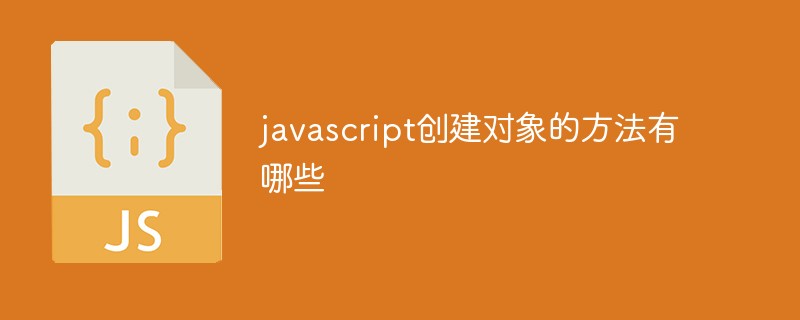
Creation method: 1. Use the "var object name = {attribute name 1: value 1, attribute name 2: value 2,...};" statement; 2. Use the "var object name = new construction Function name (args);" statement; 3. Use the "Object.create (prototype object, descriptors)" statement.

The operating environment of this tutorial: windows7 system, javascript version 1.8.5, Dell G3 computer.
There are three ways to create objects in JavaScript:
Object direct quantity
Constructing an object
Use Object.create
Object direct quantity
Using direct quantity can be fast Creating objects is also the most efficient and simple way. The specific usage is as follows:
var objectName = {
属性名1 : 属性值1,
属性名2 : 属性值2,
...
属性名n : 属性值n
};In object literals, the attribute name and attribute value are separated by colons. The attribute value can be any type of data, and the attribute name can be a JavaScript identifier or a string. type expression. Properties are separated by commas, and no comma is required at the end of the last property.
Example
The following code uses object literals to define two objects.
var o = { //对象直接量
a : 1, //定义属性
b : true //定义属性
}
var o1 = { //对象直接量
"a" : 1, //定义属性
"b" : true //定义属性
}Constructing objects
Use the new operator to call the constructor to construct an instance object. The specific usage is as follows:
var objectName = new functionName(args);
Parameter description is as follows:
objectName: the returned instance object.
functionName: Constructor, basically the same as an ordinary function, but does not need to return a return value and returns an instance object, which can be accessed in advance using this within the function.
args: Instance object initialization configuration parameter list.
Example
The following example uses different types of constructors to define various instances.
var o = new Object(); //定义一个空对象 var a = new Array(); //定义一个空数组 var f = new Function(); //定义一个空函数
Use Object.create
Object.create is a new static method in ECMAScript 5, used to create an instance object. This method can specify the object's prototype and object properties. The specific usage is as follows:
Object.create(prototype, descriptors)
The parameter description is as follows:
Accessor properties include two methods, a brief description is as follows:
set(): Set the attribute value.
get(): Returns the attribute value.
Example
The following example uses Object.create to define an object, inherits null, and contains two enumerable attributes size and shape. The attribute values are "large" " and "round".
var newObj = Object.create (null, {
size : { //属性名
value : "large", //属性值
enumerable : true //可以枚举
},
shape : { //属性名
value : "round", //属性值
enumerable : true //可以枚举
}
});
console.log(newObj.size); //large
console.log(newObj.shape); //round
console.log(Object.getPrototypeOf(newObj)); //null【Related recommendations: javascript learning tutorial】
The above is the detailed content of What are the ways to create objects in javascript. For more information, please follow other related articles on the PHP Chinese website!